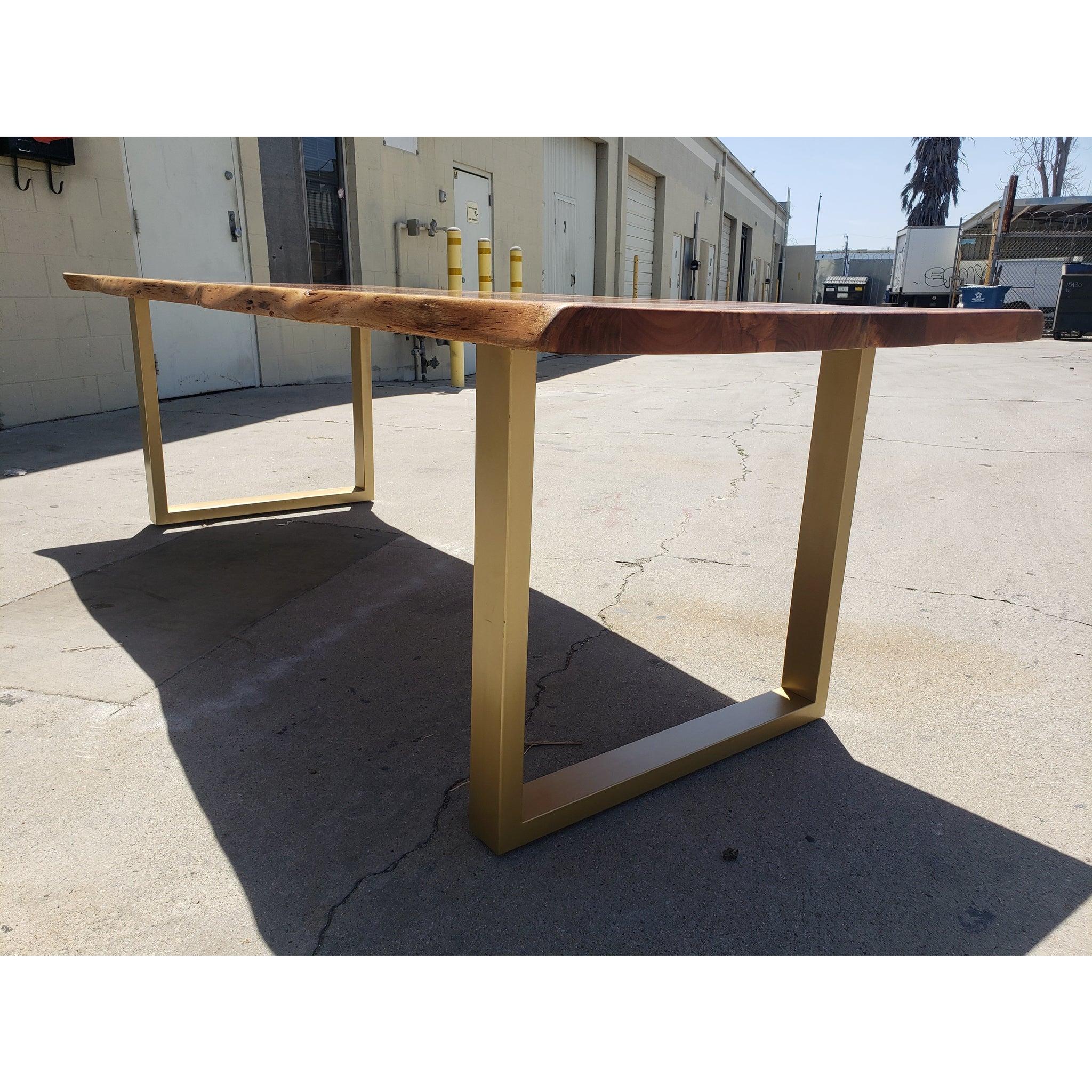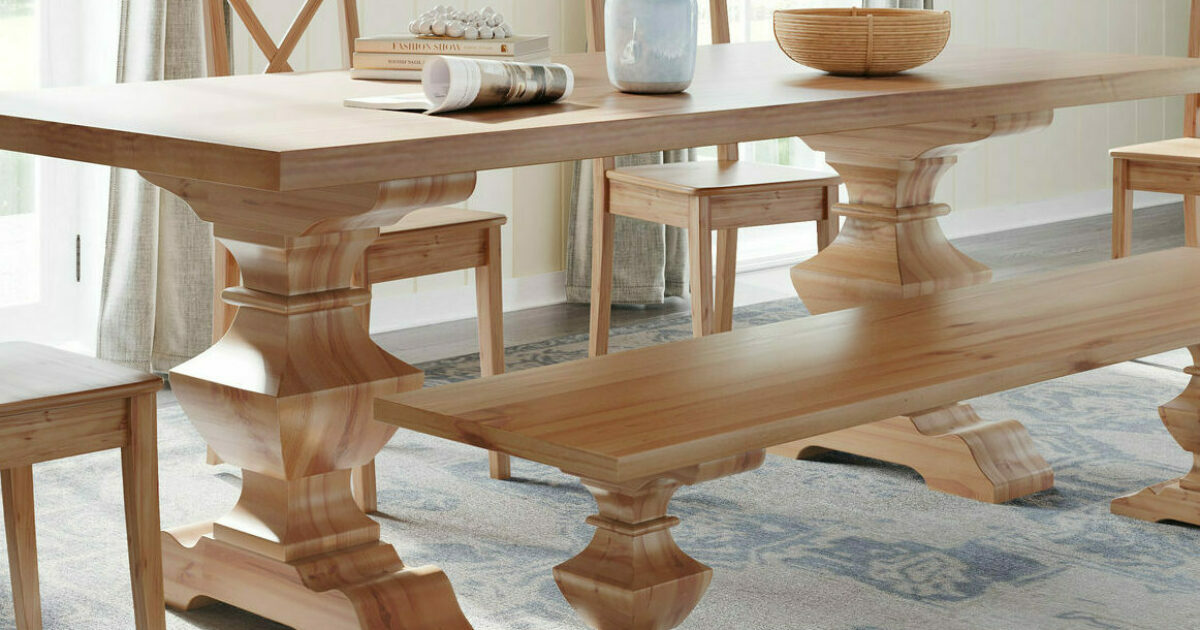Accomplish Modern Sophistication Making Use Of Streamlined Dining Table Legs Wood Styles
Essential Considerations for Picking the Right Table Legs Timber
Picking the proper wood for eating table legs entails a nuanced understanding of various aspects that influence both functionality and aesthetic appeal. The option of wood type, varying from robust woods to a lot more delicate softwoods, plays a critical function in ensuring durability and security. Each of these components can substantially affect the total experience of your eating room.
Relevance of Wood Kind

Hardwoods, such as maple, walnut, and oak, are often favored for their strength and resistance to put on. These kinds of wood supply a durable foundation that can hold up against everyday use, making them optimal for dining tables that experience constant gatherings. On the other hand, softer woods like yearn might be extra susceptible to scratches and damages, which might not be excellent for high-traffic locations.
Moreover, the choice of wood can also impact the simplicity of maintenance. Some woods call for routine oiling or sealing to maintain their look, while others may be a lot more forgiving. Eventually, selecting the suitable wood type includes stabilizing aesthetic considerations with practical requirements, making certain that the table legs not only look attractive yet additionally stand the examination of time.
Evaluating Security and Toughness
When examining eating table legs, one should consider the stability and toughness they give to the overall framework. The legs are essential in supporting the tabletop and making certain the eating experience is secure and pleasurable. A stable table is essential for stopping tipping or tottering, which can result in spills or mishaps throughout meals.
The selection of timber type dramatically affects stamina. Hardwoods such as maple, oak, and walnut are typically much more durable and long lasting than softwoods like pine or fir. Furthermore, the density and layout of the legs play an essential role; thicker legs or those with a conical style can provide much better support and security.

Aesthetic Considerations
While performance is paramount, the aesthetic appeal of dining table legs can not be ignored, as they substantially influence the overall style and atmosphere of the dining area. The option of timber, design, and finish can enhance or detract from the table's aesthetic influence.

Finishes also play a vital function in appearances. A natural finish can highlight the wood's innate elegance, while repainted or stained legs can introduce color and character right into the space. Additionally, the proportion and range of the legs about the table top and bordering furniture needs to be thought about to make sure aesthetic balance and communication.
Ultimately, the dining table legs ought to not just offer a practical function however also add to a natural and inviting environment, making them an important factor to consider in the general design of the eating location.
Maintenance Requirements
To make sure longevity and maintain the beauty of wooden eating table legs, routine maintenance is important (Dining Table Legs Wood). Wood is a natural product that can be vulnerable to damage from wetness, warm, and put on. Establishing a regular treatment plan will substantially improve the longevity of your dining table legs.
Begin with regular cleaning utilizing a soft, lint-free cloth to get rid of dust and debris that can damage the surface. For even more thorough cleansing, make use of a light soap service and damp fabric, staying clear of excess moisture that might permeate right into the wood. It is a good idea to use a premium timber polish or conditioner every few months to nurture the wood and maintain its luster.
Furthermore, consider the environment where the table is put. Prevent straight sunlight, as it can create fading, and make use of placemats or coasters to safeguard the surface from warmth and moisture. Deal with any scrapes or damages promptly with ideal wood our website filler or touch-up pens to avoid additional deterioration. By adhering to these upkeep demands, you will certainly not just maintain the visual charm of your wood table legs however additionally extend their practical life expectancy.
Spending Plan and Cost Factors
Budget plan and expense aspects often play an important duty in the decision-making procedure for selecting wood table legs. When examining choices, it is important to establish a clear budget plan that straightens with your general furniture investment. The expense of wooden table legs can vary dramatically based upon the type of wood, style, and craftsmanship complexity.
Woods such as walnut, oak, and cherry normally command higher prices because of their resilience and visual charm. In contrast, softer woods like ache might be a lot more budget friendly yet may not supply the very same longevity. Additionally, custom or artisan-crafted legs can sustain additional expenses, showing the skill and time invested in their creation.
It is additionally essential to consider the prospective long-term worth of your read this article financial investment. While choosing for lower-cost materials could seem financially sensible originally, they may call for more frequent replacement or repairs, inevitably increasing overall expenditure.
For that reason, stabilizing high quality and price is vital. Focus on products that fulfill your aesthetic preferences while ensuring they fit conveniently within your budget plan, allowing you to produce an eating area that is both aesthetically attractive and practical.
Final Thought
In final thought, selecting the ideal timber for dining table legs demands careful consideration of various elements, consisting of timber type, security, visual appeals, upkeep, and spending plan. Inevitably, a knowledgeable decision will certainly enhance the long life and aesthetic charm of the eating table, making sure fulfillment and functionality for years to come.
Choosing the best kind of wood for dining table legs is vital for both visual charm and architectural honesty. Inevitably, selecting the proper wood type involves balancing aesthetic factors to consider with sensible needs, making sure that the eating table legs not only look enticing yet likewise stand the test of time.
It is a good idea to apply a top notch timber gloss or conditioner every couple of months to nurture the wood and maintain its radiance.
The price of wood eating table legs can vary dramatically based on the type of timber, craftsmanship, and design complexity.
In conclusion, selecting the suitable wood for eating table legs necessitates cautious consideration of numerous factors, including timber kind, stability, aesthetic appeals, upkeep, and budget plan.